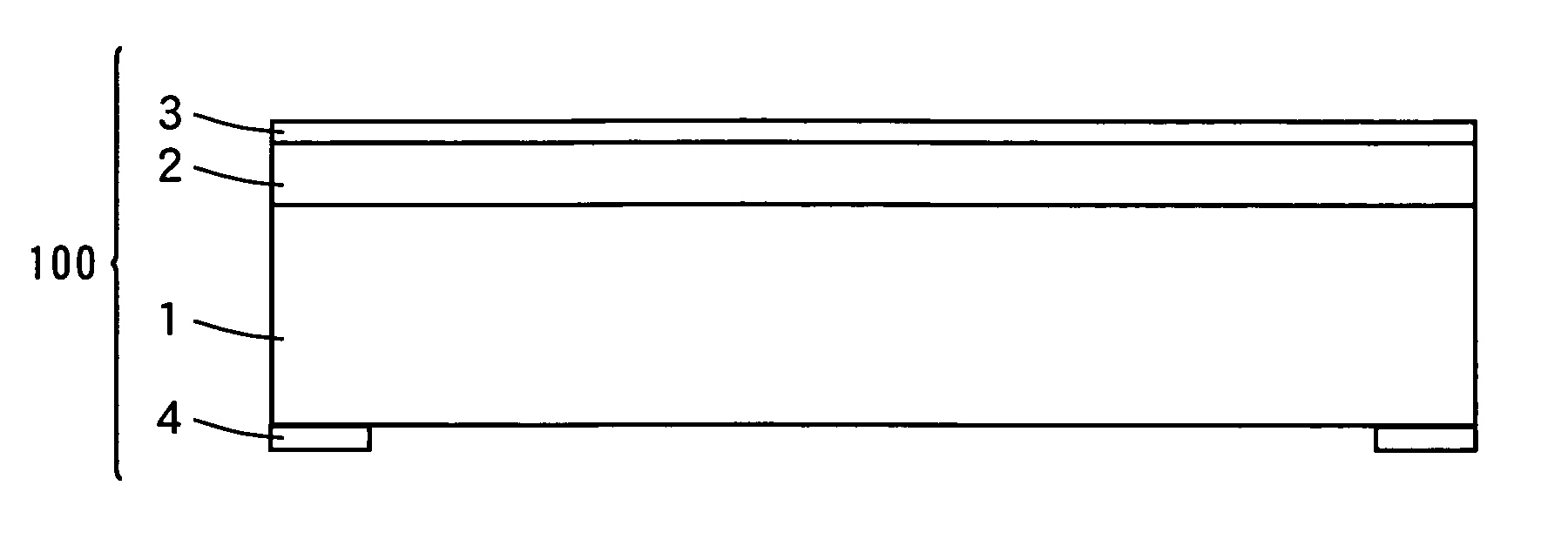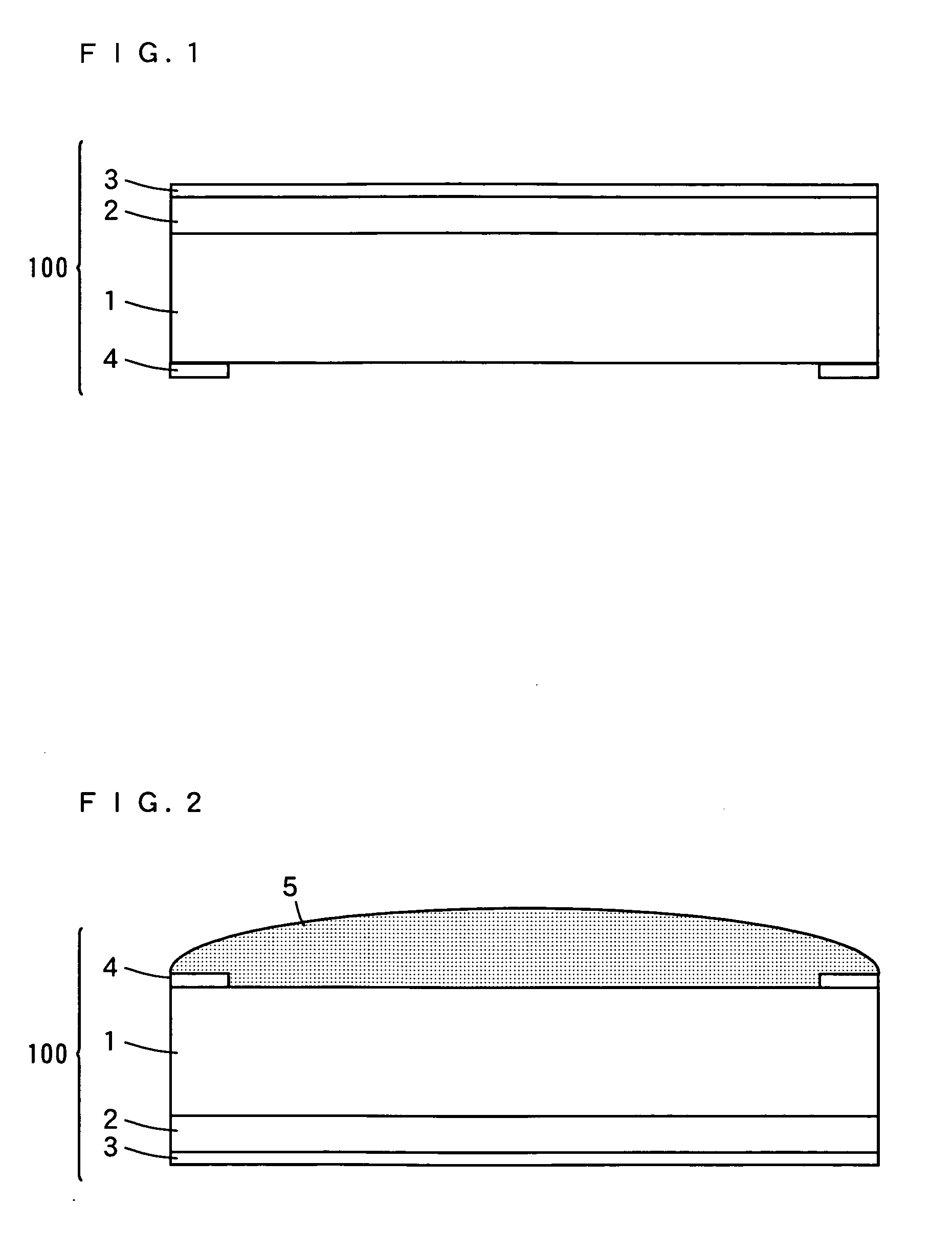Light emitting device and fabrication method thereof
a technology of light emitting device and fabrication method, which is applied in the direction of lasers, semiconductor lasers, lighting and heating apparatus, etc., can solve the problems of low light extraction efficiency, fraction of consumed electrical input contributing to externally observable light, and achieve the effect of improving light extraction efficiency
- Summary
- Abstract
- Description
- Claims
- Application Information
AI Technical Summary
Benefits of technology
Problems solved by technology
Method used
Image
Examples
examples
[0139] The present invention will, hereinafter, be described in more detail through Examples, by which the invention shall not be limited.
[0140] In Inventive Examples 1 to 5 and 7 to 10, light emitting devices having the structure shown in FIGS. 1 to 5 were fabricated, whereas in Inventive Example 6, a light emitting device having the structure shown in FIG. 6 was fabricated. The light emitting device structures 100 of the light emitting devices in the Inventive Examples 1, 2, 4 to 10 are the GaN-based LEDs as shown in FIG. 7. The light emitting device structure 100 of the light emitting device in the Inventive Example 3 is the ZnO-based LED as shown in FIG. 8.
[0141] In Comparative Example, a light emitting device having the light emitting device structure 100 as shown in FIG. 7, without an inorganic material layer, was fabricated.
[0142] The light emitting devices measure 1 mm per side. In each of the light emitting devices, an n-electrode 4 was formed on the outer peripheral reg...
PUM
| Property | Measurement | Unit |
|---|---|---|
| transparent | aaaaa | aaaaa |
| refractive index | aaaaa | aaaaa |
| refractive index | aaaaa | aaaaa |
Abstract
Description
Claims
Application Information
 Login to View More
Login to View More - R&D
- Intellectual Property
- Life Sciences
- Materials
- Tech Scout
- Unparalleled Data Quality
- Higher Quality Content
- 60% Fewer Hallucinations
Browse by: Latest US Patents, China's latest patents, Technical Efficacy Thesaurus, Application Domain, Technology Topic, Popular Technical Reports.
© 2025 PatSnap. All rights reserved.Legal|Privacy policy|Modern Slavery Act Transparency Statement|Sitemap|About US| Contact US: help@patsnap.com



